By now, you’re probably tired of working eight hours a day at your dining room table. The chair is uncomfortable, the lighting is harsh, and the TV playing in the living room provides a constant source of distraction.
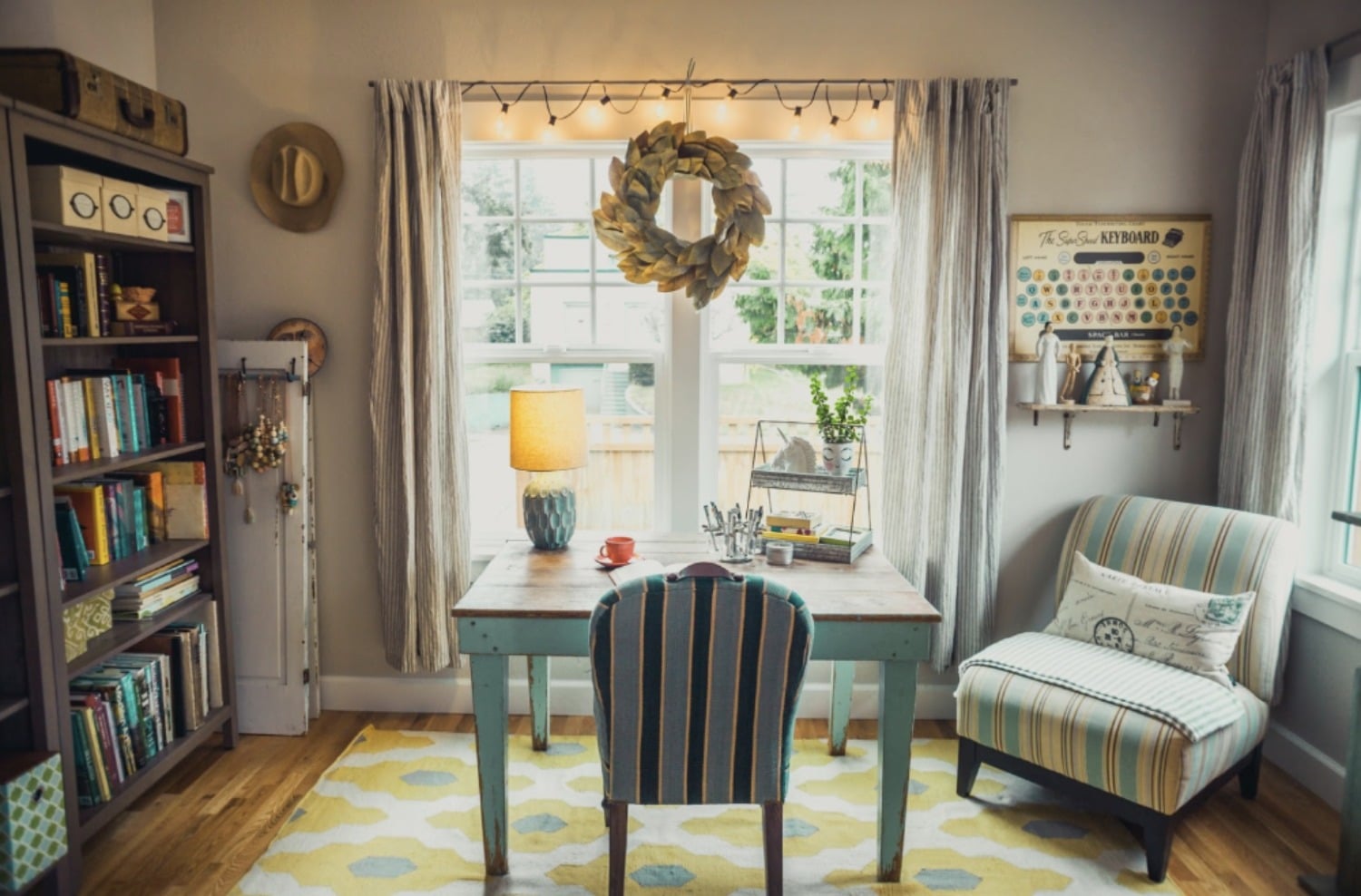
This has been the reality for many office workers over the past few months. And while some employers are starting to open their offices again, others are remaining shuttered for the foreseeable future.
If you’re one of those workers looking at an extended period of working from home, perhaps you’re thinking about building your own home office. If so, you’re in luck.
In this blog, you’ll discover some home office lighting ideas, plus how proper lighting and air conditioning improve your productivity.
Tips to Keep Your Home Office Cool
Filling a room full of monitors, lights, a computer, and possibly a printer is going to cause a significant increase in room temperature.
Though it may not be as noticeable in the open spaces of your living room or traditional office setup, the heat produced will certainly be felt once you’re in a home office space.
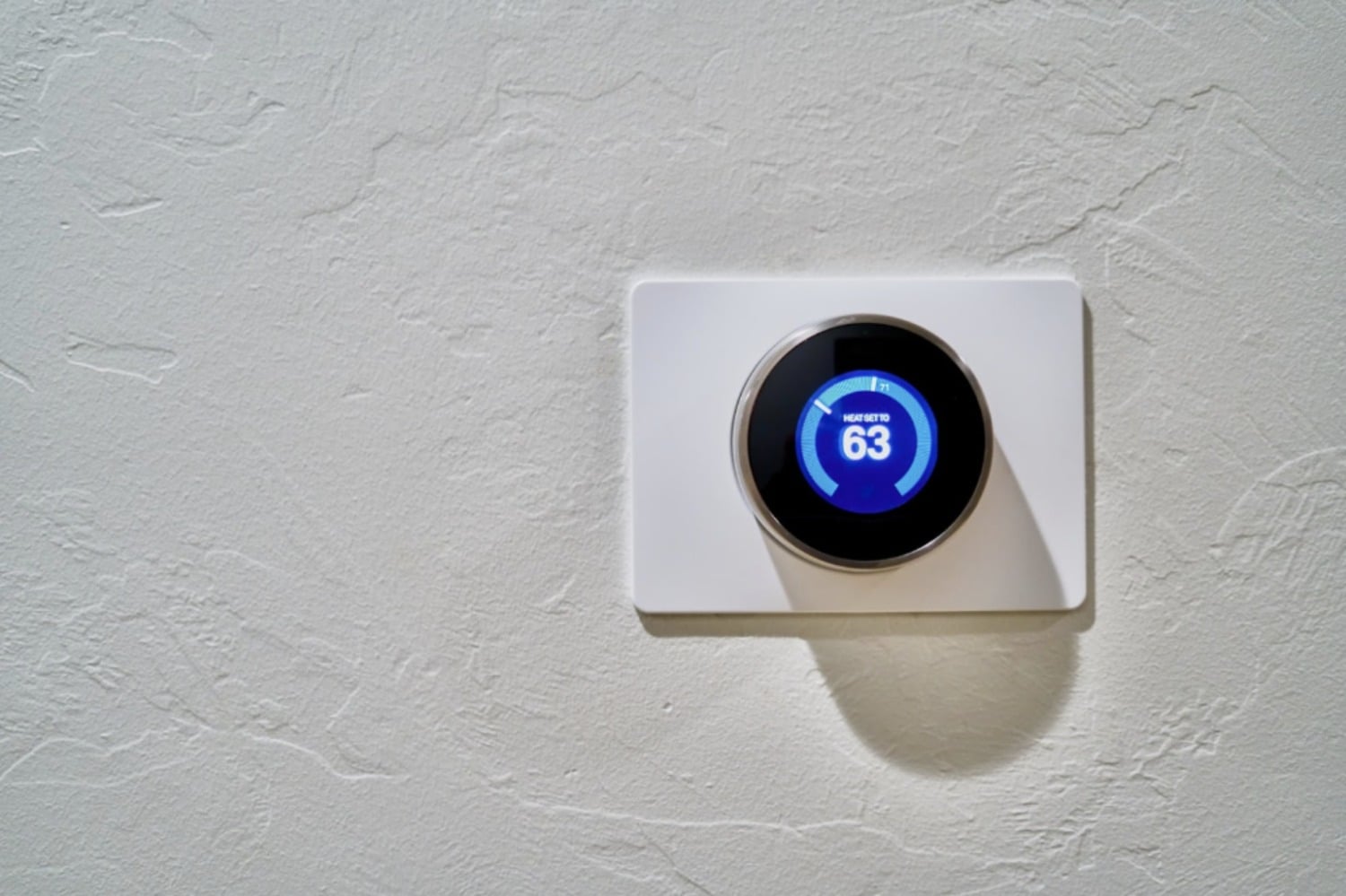
Consider setting up your office in a room with a window, and placing your desk either adjacent to or in front of the window. Not only will it provide pleasant scenery to gaze out at throughout the day, windows provide an adjustable source of light (good for your Zoom meetings) and temperature.
In the summer months, an open window may not be enough to keep temperatures comfortable, especially if that window gets sun during the day. Purchasing a fan, or installing a ceiling fan, can give you a pleasant cross breeze, cooling off the room quicker and promoting constant circulation of fresh air.
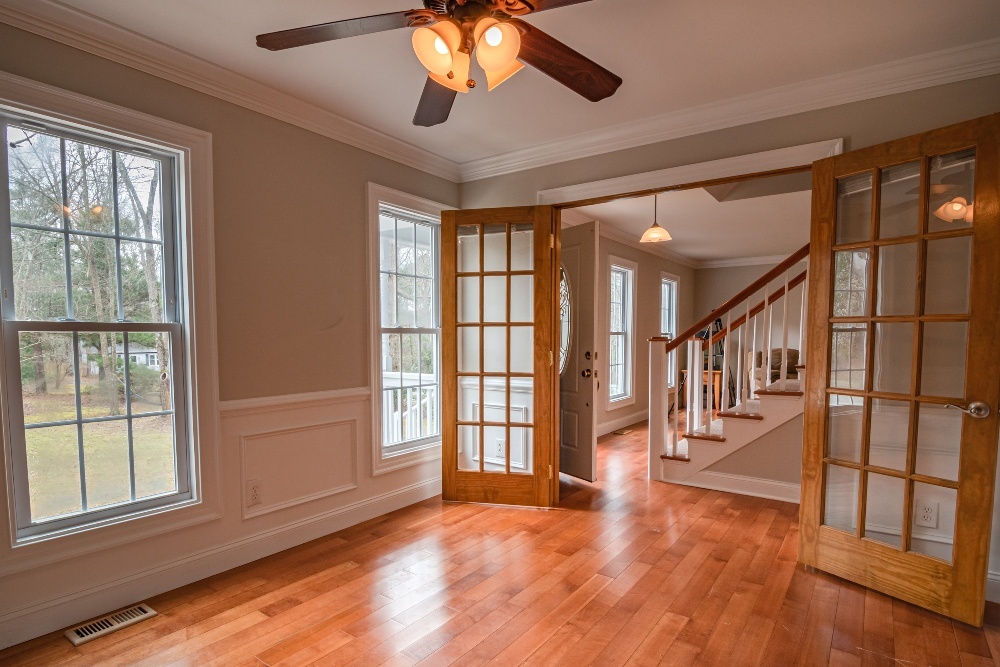
If it becomes too much to bear, even with the windows open and fans on, consider purchasing an air conditioner. Though installing a window AC in your home office may seem like the obvious option, the noise may provide more harm than help when it comes to productivity.
Instead, consider installing a central air conditioning unit in your home. Not only do they give you temperature control over your whole home (which other members of your home may appreciate), they’re more cost effective than other air conditioning alternatives.
To take the temperature control of your home office to the next level, you can install a smart thermometer, which allows you to control the temperature with your smartphone and set an air conditioning schedule according to your needs.
Three Types of Home Office Lighting for Productivity

Choosing the proper lighting for your home office is more complex than it may initially appear. Though the amber hues and exposed filaments of Edison bulbs emit a lovely glow, they are simply no good for productivity.
And the simple overheads that currently light your room may either not properly illuminate the areas of the room that need lighting or are too harsh and will cause headaches and eye soreness.
For the best home office lighting, we typically recommend three different sources of light.
#1. An Indirect Light Source
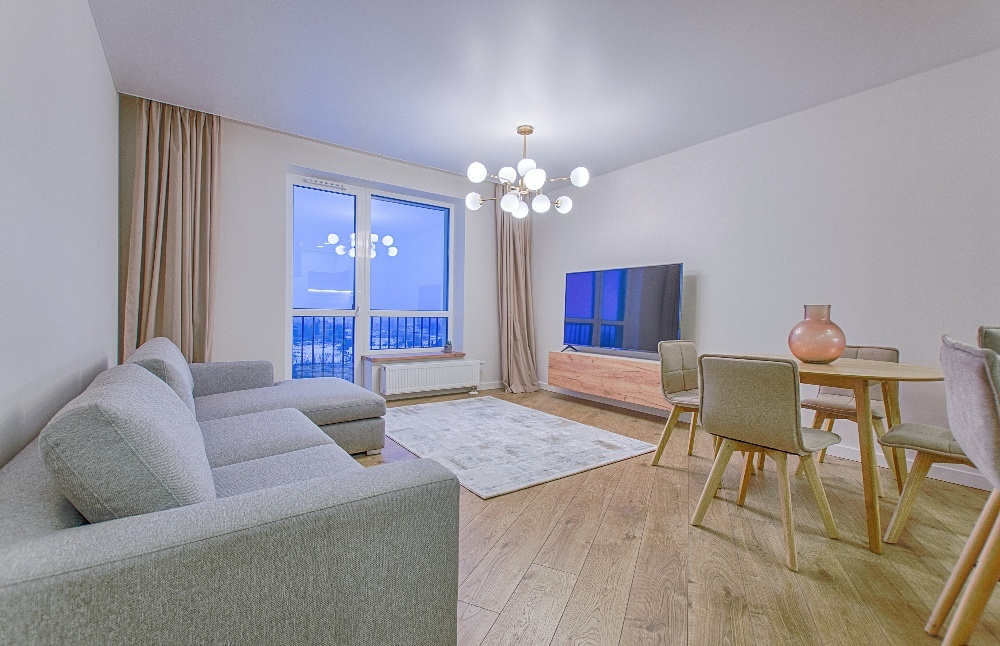
An indirect light source creates diffuse, ambient light that spreads evenly across the room, leaving no spots of extreme contrast or unpleasant glare.
Installing a ceiling light that spreads a diffuse light will do the trick. Ceiling lights are also designed to spread light evenly around the room, avoiding the contrast issue.
However, installing a ceiling light can be tricky, and there are often wiring considerations that have to be made, so you may want to reach out to an electrician for help.
Ideally, you’ll want lights that have a colour temperature of at least 4,000 kelvin. At that temperature, you’re finding that middle ground between lighting that’s too soft and too harsh. We recommend LED ceiling lights because they last longer and are more energy efficient than the alternatives.
A licensed electrician can help you plan the lighting placement that would work best for your particular space and needs.
#2. A Form of Direct Light

A direct light source is ideal for when you need to focus on a specific task.
A desk lamp for home office use is the ideal choice here, preferably one with an adjustable neck that allows you to choose where the light is focused. If your home office has multiple workstations (for example a work desk, a reading chair, and couch) try to have one focus light at each station.
#3. A Source of Natural Light
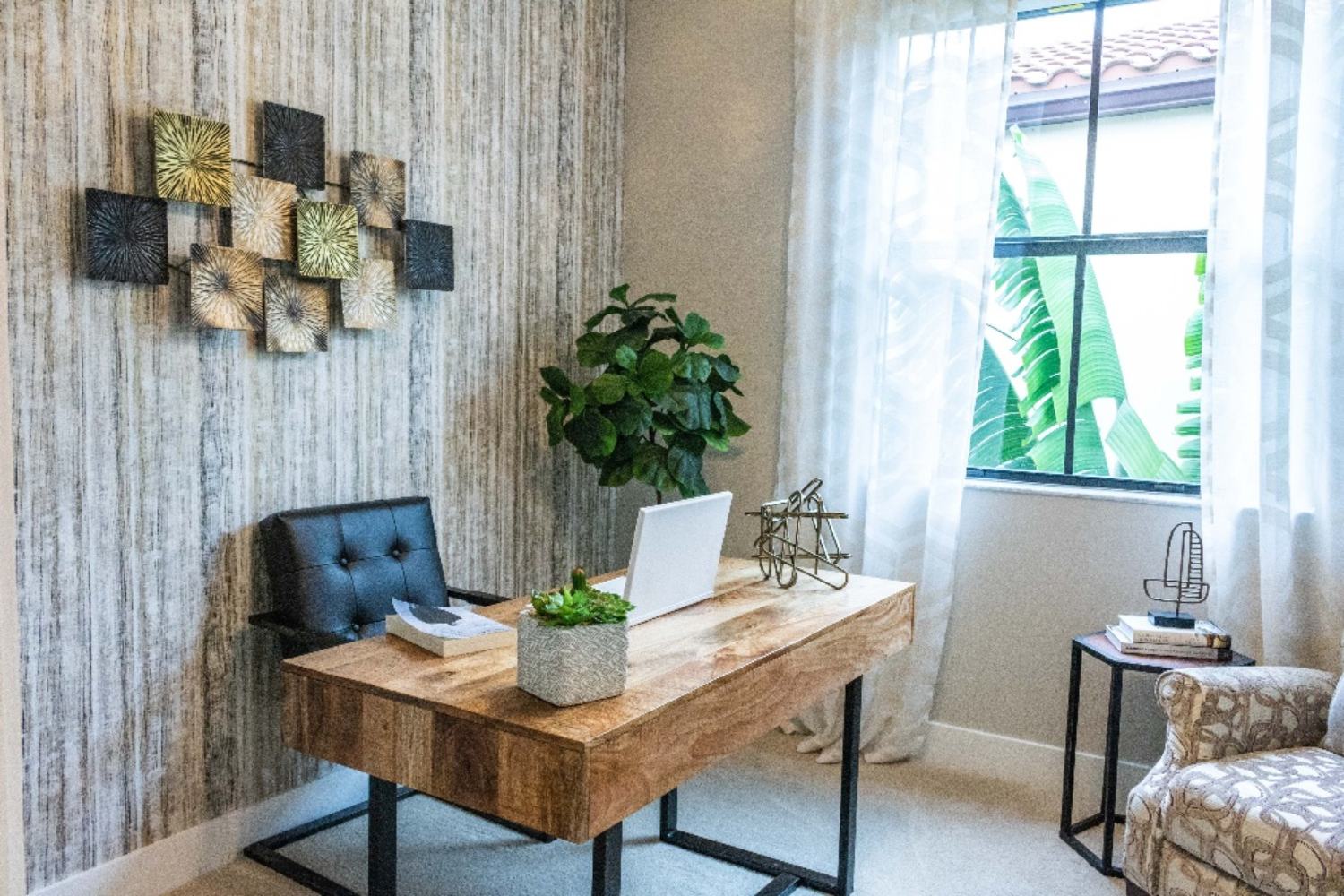
Where you position yourself relative to the natural light source is important here.
Having your sources of natural light behind your desk causes unnecessary and unpleasant screen glare. But placing your desk in front or beside your natural light source allows you to gather the benefits of natural light without the harsh shadows or overwhelming glare.
If your office gets direct sunlight during the afternoon, purchasing solar shades will reduce the heat without losing the pleasant light.
Placing your desk in front of the window has the lovely benefit of improving your complexion in Zoom meetings and other video conferencing calls.
It’s best practice for professional photographs to place their subject in front of a source of soft natural light, and by placing your desk in front of a window you will be following their advice to a tee!
Key Takeaways
When building your home office, there’s more to consider than just your desk and chair. The difference between having a home office you love and one you don’t can often be the things many people overlook.
The ability to keep the office cool in the summer and lit in a way that promotes productivity and well-being are two such factors.
Now that you’ve read this guide, we hope you feel prepared to start building up your dream home office.
